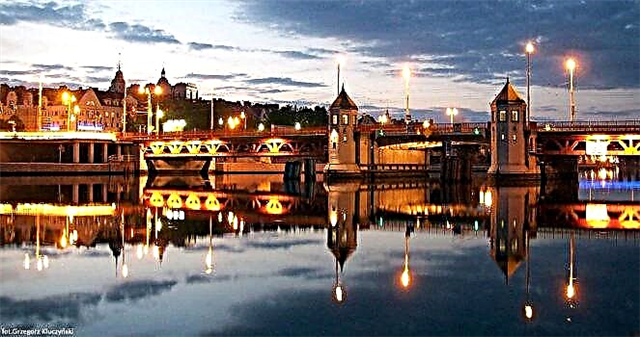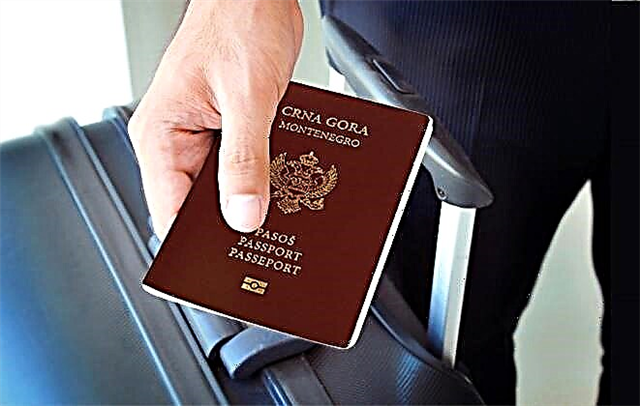A soldier with a sword, holding a child in his arms ... Every year, in late April - early May, millions of people lay flowers at the foot of this monument in Germany as a token of gratitude to the Soviet soldier-liberator. All over the world, Treptower Park in Berlin is associated with a grandiose memorial complex dedicated to the memory of the soldiers and officers of the Soviet Army who died in the fight against fascism.

History of the park
Berlin is rightfully considered one of the greenest European capitals. For a long time, the Germans took care of landscaping and arranging places for recreation, walks and sports, laying out vast parks and squares. At the beginning of the 19th century, the Directorate of Urban Gardens created in Germany was headed by Johann Gustav Mayer. His love of landscape architecture led to the creation of a huge park area along the picturesque bank of the Spree River in the eastern part of Treptow-Köpenick.
Mayer's project involved the creation of a man-made forest, the layout of alleys and lawns, sports grounds and ponds, the arrangement of fountains and piers. However, the author managed to take part only in the ceremony of laying the park; all other works were completed after his death.
The opening of the park, which spreads over an area of almost 90 hectares, took place in 1888.
Treptower Park became the second largest park in Berlin after the Tiergarten, which at the end of the 19th and the beginning of the 20th century was a favorite resting place of the townspeople.
Residents of the German capital gladly walked along its shady alleys, dined in summer cafes, rode boats on the river. The place was quiet, secluded, away from the city's main thoroughfares.
During World War II, most of the park's facilities were destroyed. However, already in 1949, on the occasion of Victory Day, a memorial to the fallen Soviet soldiers was opened here, the culminating point of which was the famous monument to the soldier-liberator.
In accordance with an open-ended agreement, the city authorities of Berlin are obliged to maintain order on the territory of the memorial complex and, if necessary, carry out restoration work, but they have no right to change anything. In the 50s, destroyed sculptures and a fountain were restored in the park, a rose garden and a sunflower garden appeared.
Who became the prototype of the warrior-liberator
There are many legends about the history of the creation of the Berlin monument. However, the most reliable version is considered to be the heroic act of Sergeant Nikolai Masalov, who, during the storming of Berlin, brought out a three-year-old child from the shelling - a little girl who was crying bitterly over the body of her murdered mother. In the short intervals between volleys of fire, the Soviet soldier managed to drag her to safety, but he himself was wounded. This fact is reflected in the memoirs of Marshal Chuikov.
But there is other evidence of such heroism of Soviet soldiers, whose names have remained unknown. So the idea of a monument is quite justified.

The project of the monument was approved at the government level. Over 30 projects were submitted for the competition. The winners of the competition were the architect Yakov Belopoltsev and the sculptor Yevgeny Vuchetich.
Paratrooper Viktor Gunaz and infantryman Ivan Odarchenko, who for six months alternately posed for the sculptor, and the role of the girl was played by the three-year-old daughter of the commandant of Berlin, Svetlana Kotikova, became the models for the monument to the soldier with the German girl rescued in her arms.
Memorial of Soldier Glory
During the storming of Berlin, 22,000 Soviet soldiers were killed, of which 7,000 were buried in Treptower Park. The remains of the soldiers were moved here in 1947-1949. from the places of temporary burial and erected the Memorial of Soldier Glory. This is the largest military memorial complex outside of Russia. The main material for its construction was granite from Hitler's Reich Chancellery.
The composition of the memorial consists of several iconic elements. The entrance is made in the form of a symbolic gate formed by lowered flags of red granite, at the foot of which are placed kneeling figures of a mourning old soldier and a young warrior.
On the banners there are inscriptions in two languages: "Eternal glory to the soldiers of the Soviet Army, who gave their lives in the struggle for the liberation of mankind."
At the entrance to the memorial, visitors are greeted by the grieving Motherland. A fragile woman, holding one hand to her heart and the other leaning on the ground in search of support, sits as if alive, with her head bowed.
This touching figure symbolizes the grief of all mothers who lost their sons in wars. The Grieving Mother was carved out of a monolithic granite block and installed in 1967.
An alley of weeping birches growing on both sides of the complex, which personify Russian nature and seem to mourn the millions of the fallen, leads to the Monument to the Liberator Warrior, symbolizing the living connection of the mother with the victorious son.
In the central part of the alley there are five mass graves with bowls for eternal fire, symbolizing five long years of war, which are surrounded by marble sarcophagi, on which are carved bas-reliefs depicting the exploits of Soviet soldiers.
The dominant composition of the memorial complex is the majestic monument to the soldier-liberator, which is 12 meters high and weighs 72 tons. A soldier with a girl was cast in Leningrad and delivered to Berlin in parts by water.
The bronze sculpture of a soldier with a child in his arms is more than symbolic. The swastika cut by the sword of the winner and its fragments trampled upon by him became the personification of the victory over fascism. A lowered sword, tightly gripped by a sinewy hand, which is an exact copy of the sword of the first Pskov prince Vsevolod-Gabriel, is always ready to repulse any enemy. Well, the girl in her arms symbolizes the saving mission of Soviet soldiers, their courage, nobility and selflessness.
There is a memorial room inside the pedestal of the monument to the Liberator Soldier. Its walls are covered with mosaic panels depicting representatives of all the republics of the Soviet Union laying wreaths at the graves of fallen soldiers.
In the center of the room, on a black stone pedestal, there is a gilded box containing a red-bound tome containing the names of all those buried in the mass graves of Treptow Park. The ceiling of the memorial room is decorated with a chandelier in the shape of the Order of Victory, made with rubies and rock crystal.
Park area today
A massive visit to Treptow Park and the memorial falls mainly on May 8-9, when thousands of Russians living in Germany, tourists from different countries, as well as representatives of embassies of various states and anti-fascist organizations, lay flowers on the fallen soldiers. During the rest of the year, the memorial complex is practically deserted.
But the park itself successfully fulfills the function intended for it from the moment of its foundation - a place of rest.
Berliners with children and guests of the city come here just to wander the alleys, cool off by the fountains or have a picnic. On the territory of the park there is a playground with slides, teremkas and water attractions. Those interested can rent a boat for a walk on the Spree.
For those who like to observe the movement of planets and stars, the doors of the Archenhold Observatory, which was created back in 1896, are open. Now it is a modern planetarium with a powerful telescope, a lecture hall and educational buildings. On June 2, 1915, Albert Einstein made his first report on the theory of relativity here.
The most popular hotel is the Senner Hotel with a beer garden with 1,500 seats. An open terrace is open here in summer.
How to get to Treptow Park
Treptower Park is open every day.Accompanied by a guide, you can visit it during the excursion "Historical trip in Berlin", and get from the center of Berlin on your own - by train S7 or S9 to the Ostkreuz station, where change to the ring line to the Treptower Park stop. After walking along Pushkinskaya Alley, you can use buses №№166, 265 and 365. The whole journey takes about half an hour.
Conclusion
The Treptow Park Soldier's Memorial is a must-see for anyone visiting Berlin. To remember the years of suffering, the pain of loss and the joy of the great Victory.











